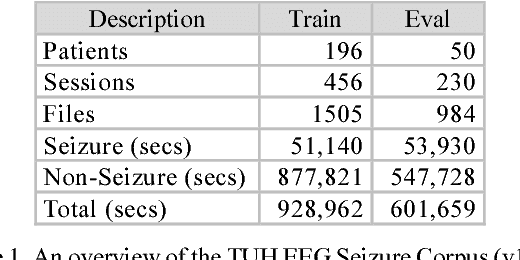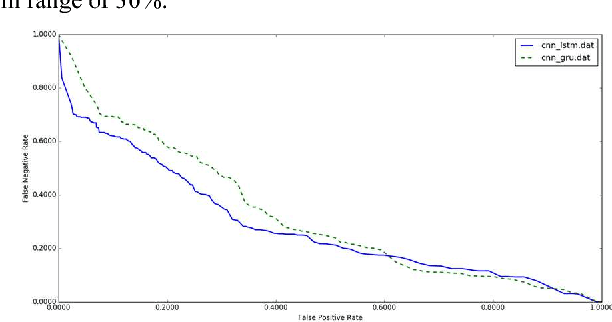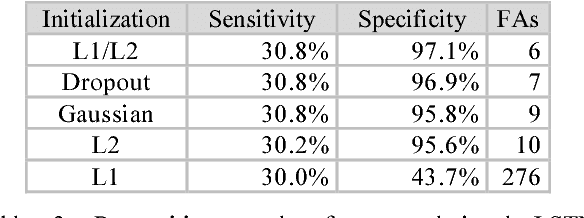Gated Recurrent Networks for Seizure Detection
Paper and Code
Jan 03, 2018



Recurrent Neural Networks (RNNs) with sophisticated units that implement a gating mechanism have emerged as powerful technique for modeling sequential signals such as speech or electroencephalography (EEG). The latter is the focus on this paper. A significant big data resource, known as the TUH EEG Corpus (TUEEG), has recently become available for EEG research, creating a unique opportunity to evaluate these recurrent units on the task of seizure detection. In this study, we compare two types of recurrent units: long short-term memory units (LSTM) and gated recurrent units (GRU). These are evaluated using a state of the art hybrid architecture that integrates Convolutional Neural Networks (CNNs) with RNNs. We also investigate a variety of initialization methods and show that initialization is crucial since poorly initialized networks cannot be trained. Furthermore, we explore regularization of these convolutional gated recurrent networks to address the problem of overfitting. Our experiments revealed that convolutional LSTM networks can achieve significantly better performance than convolutional GRU networks. The convolutional LSTM architecture with proper initialization and regularization delivers 30% sensitivity at 6 false alarms per 24 hours.
 Add to Chrome
Add to Chrome Add to Firefox
Add to Firefox Add to Edge
Add to Edge